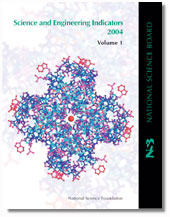 |

|
 |
 |
Pictures depict how cells within the heart valve can be regulated through a delivery of biologically active molecules. The scaffold can be used to present these molecules to the cells and influence how the cells express different proteins, which is very important in the regeneration of healthy tissue structures. Engineers carefully manage this process to prevent the over-production of proteins, which could lead to an unhealthy imbalance and tissues that won't function properly.
Credit: Gennye Walker of the Leslie Leinwand Lab, collaborator with the Anseth Lab at the University of Colorado at Boulder
|
University of Colorado Tissue Engineer to Receive NSF's Coveted Waterman Award—Kristi Anseth Builds onto her Fast Track Career with $500,000 Award
If the name Kristi Anseth hasn't yet reached our collective consciousness, just wait. Anseth, a chemical engineer at the University of Colorado at Boulder, is already reaching for the heights like a Trump skyscraper, leading a team of researchers in building the scaffolds of new materials that promise to elevate many aspects of medical care for injuries and disease. Already a nationwide leader in the study of biomaterials, Anseth's creative work at the intersection of chemistry, biology and engineering may one day lead to wide use of easily replaceable body parts for people suffering from injuries or chronic conditions.
More...
(posted May 6, 2004)
|
 |
|
 |
The cover of S&E; Indicators 2004 features a model of the potassium channel in the bacterium Streptomyces lividans. Roderick MacKinnon's discovery of the details of this structure and his explanation for how membranes pass electrical charge through cell walls led to his 2003 Nobel Prize in Chemistry. The potassium ion is shown in red at the center of the channel in the symmetrical structure. The surrounding four identical subunits of the protein are conserved in all known potassium ion channels. MacKinnon's work was supported by the National Institutes of Health at the Cornell High Energy Synchrotron Source (CHESS), a facility developed around an accelerator funded by the National Science Foundation originally built for studies of high-energy physics.
Credit: Cover image reprinted with permission from Science 280 (5360), April 3, 1998, copyright 1998 AAAS.
|
United States Still Leads in Science and Engineering, But Uncertainties Complicate Outlook—National Science Board Highlights Workforce Issues in its Release of S&E; Indicators 2004
The United States remains the world's leading producer of and a net exporter of high-technology products and ranks among the global leaders in research and development (R&D;) spending. However, ongoing economic and workforce changes make the outlook for the future uncertain, according to Science and Engineering (S&E;) Indicators 2004, a biennial report of the National Science Board to the president. "The United States is in a long-distance race to retain its essential global advantage in S&E; human resources and sustain our world leadership in science and technology," said NSB Chair Warren M. Washington. "For many years we have benefited from minimal competition in the global S&E; labor market, but attractive and competitive alternatives are now expanding around the world. We must develop more fully our native talent."
More...
(posted May 6, 2004)

|
 |
|
 |
This snapshot comes from an animated simulation of the molecular dynamics of an A. pernix protoglobin model developed at the Maui High Performance Computing Center. It shows a histidine amino acid attached to the iron-based heme group. Using information from the Protein Data Bank, a simulation of protoglobin demonstrated that at 100 degrees C (or 212 Fahrenheit) over one nanosecond the protoglobin does not denature. The colors represent various chemical characteristics: red signifies acidic; blue, basic; white, neutral; green, neutral but polar; and yellow, residues that influence the "heme cleft."
Credit: Image and simulation by James Newhouse, MHPCC
|
Oldest Hemoglobin Ancestors Offer Clues to Earliest Oxygen-Based Life—Close Look at Structure of Transport Proteins Could Aid Search for Future Blood Substitutes
Red-blooded genealogists take note: The discovery in microbes of two oxygen-packing proteins, the earliest known ancestors to hemoglobin, brings scientists closer to identifying the earliest life forms to use oxygen. According to the project's lead investigator, University of Hawaii microbiologist Maqsudul Alam, the research may also aid in the search for blood substitutes as new molecular details shed light on how the structure of such proteins, called protoglobins, evolved to transport and release oxygen.
More... (posted
May 6, 2004)

|
 |
|
 |
2003 PAESMEM recipients.
Image credit: Jack Hartzman
|
President Bush Honors Excellence in Science, Mathematics and Engineering Mentoring
President Bush recently announced nine individuals and eight institutions to receive the 2003 Presidential Award for Excellence in Science, Mathematics and Engineering Mentoring (PAESMEM). Each award includes a $10,000 grant for continued mentoring work. Each year the president recognizes the people and institutions that have provided broad opportunities for participation by women, minorities and people with disabilities in science, mathematics and engineering in elementary, secondary, undergraduate and graduate education.
More...
(posted May 12, 2004)

|
 |
|
 |
Duke University's Ashutosh Chilkoti explains how a nanoscale "pen" laid down thin trails of enzyme "ink," which then carved out the 400-nanometer-wide channels shown in the background.
Credit: Duke University photo by Jim Wallace
|
Enzyme "Ink" Shows Potential for Nanomanufacturing-
Experiment Uses Biomolecules to Write on a Gold Substrate
Duke University engineers have demonstrated that enzymes can be used to create nanoscale patterns on a gold surface. Since many enzymes are already commercially available and well characterized, the potential for writing with enzyme "ink" represents an important advance in nanomanufacturing. This research was funded by the National Science Foundation through a Nanotechnology Interdisciplinary Research Initiative (NIRT) grant.
More... (posted
May 6, 2004)

|
 |
|
 |
Cicadas will soon awaken from a 17-year-long
nap.
Credit: Alex Jeon, National Science Foundation |
The
Cicadas Are Coming, the Cicadas Are Coming: Research on "Brood X" Cicadas
Focus of Briefing
Cicada experts funded by the National Science Foundation (NSF) will discuss the
biology, economic impact, geographic distribution and genetics of the Brood
X periodical cicadas emerging from the ground this May. These large, winged
insects appear by the trillions across the northeast and mid-west every 17
years. Brood X cicadas have developed in underground holes for the past 17
years by sucking on tree roots.
More...
(posted May 10, 2004)

|
 |
| |

|

